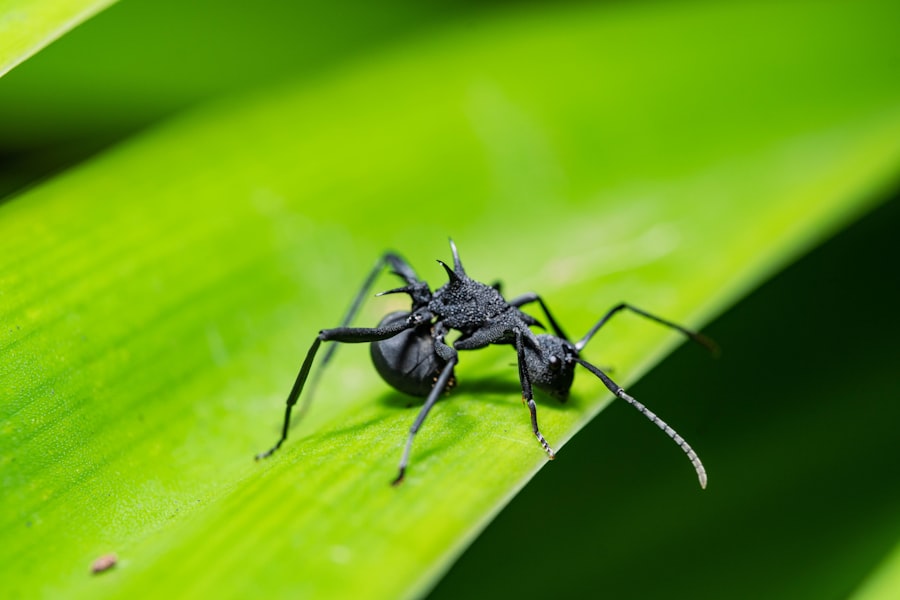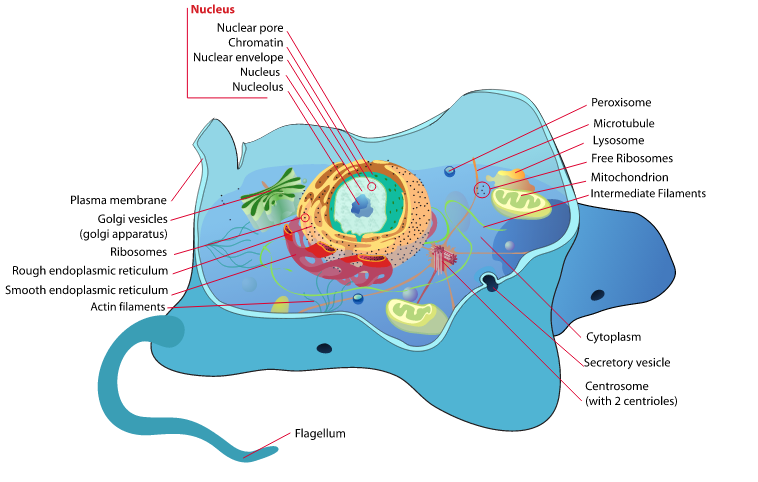Pholidota, commonly known as pangolins or spiny anteaters, are a unique group of mammals that belong to the order Pholidota. They are characterized by their distinctive scales, which cover their bodies and provide them with protection against predators. Pholidota are fascinating creatures that have captured the attention of scientists and researchers around the world, including those in Britain.
Studying Pholidota in Britain is of great importance for several reasons. Firstly, it allows us to gain a better understanding of the biodiversity and ecological dynamics of the country. Pholidota play a crucial role in maintaining the balance of ecosystems by controlling populations of ants and termites, which are their primary food sources. Additionally, studying Pholidota in Britain helps us to assess the health of their populations and the impact of human activities on their habitats.
Summary
- Pholidota, also known as spiny anteaters, are native to Britain and have unique physical characteristics such as scales and long tails.
- They are solitary and nocturnal creatures that feed on ants, termites, and other insects.
- Pholidota’s habitat and distribution in Britain are threatened by habitat loss and hunting.
- Conservation efforts are being made to protect Pholidota and their importance in the ecosystem cannot be overstated.
- The future of Pholidota in Britain faces challenges, but opportunities for their protection and preservation exist.
The Physical Characteristics of Pholidota: From Scales to Tails
Pholidota are easily recognizable by their unique physical features. They have a cylindrical body covered in overlapping scales made of keratin, similar to those found in human hair and nails. These scales provide them with protection against predators and are one of the defining characteristics of the order Pholidota.
There are several species of Pholidota found in Britain, each with its own distinct physical characteristics. The European pangolin (Manis temminckii) is the largest species found in Britain, measuring up to 1 meter in length. It has long, powerful claws for digging and a prehensile tail that helps it climb trees. The Chinese pangolin (Manis pentadactyla) is slightly smaller and has shorter claws, but it has a longer tail that it uses for balance when walking on its hind legs.
The Habitat and Distribution of Pholidota in Britain
Pholidota are found in a variety of habitats in Britain, including forests, grasslands, and wetlands. They are most commonly found in areas with dense vegetation and abundant food sources, such as ants and termites. Pholidota are highly adaptable and can survive in a range of environments, from urban areas to remote wilderness.
The distribution of Pholidota in Britain is not well-documented, as they are elusive creatures that are difficult to spot in the wild. However, there have been reported sightings of Pholidota in various parts of the country, including the Scottish Highlands, the Lake District, and the Welsh countryside. These sightings suggest that Pholidota have a relatively wide distribution in Britain, although their populations may be small and fragmented.
The Diet of Pholidota: Ants, Termites, and More
| Species | Ants Consumed | Termites Consumed | Other Insects Consumed |
|---|---|---|---|
| Manis crassicaudata | Up to 70 million per year | Up to 200,000 per year | Beetles, larvae, and other insects |
| Manis javanica | Up to 70 million per year | Up to 200,000 per year | Beetles, larvae, and other insects |
| Manis pentadactyla | Up to 70 million per year | Up to 200,000 per year | Beetles, larvae, and other insects |
Pholidota are insectivorous mammals that primarily feed on ants and termites. Their long, sticky tongues allow them to lap up these small insects with ease. Pholidota have a high metabolic rate and need to consume large quantities of insects to meet their energy requirements.
The diet of Pholidota is not limited to ants and termites alone. They also consume other small invertebrates, such as beetles, worms, and larvae. In some cases, they may even eat small vertebrates, such as lizards or rodents. However, ants and termites make up the majority of their diet due to their abundance and nutritional value.
The feeding habits of Pholidota have important implications for the ecosystem. By controlling populations of ants and termites, they help to maintain the balance of insect populations and prevent outbreaks of pests. This is particularly important in agricultural areas where ants and termites can cause significant damage to crops.
The Behaviour of Pholidota: Solitary and Nocturnal Creatures
Pholidota are solitary creatures that prefer to live alone rather than in groups. They are most active at night and spend the majority of their day resting in burrows or hollow trees. Pholidota are highly adapted to their nocturnal lifestyle, with large eyes and excellent night vision.
During the night, Pholidota venture out in search of food. They use their keen sense of smell to locate ant and termite nests, which they then dig open with their powerful claws. Once they have located a nest, they use their long, sticky tongue to extract the insects and consume them.
Pholidota are generally shy and elusive animals that prefer to avoid human contact. When threatened, they will curl up into a tight ball and use their sharp scales as a form of defense. This behavior, known as “balling up,” makes it difficult for predators to attack them.
The Reproduction of Pholidota: Mating, Gestation, and Birth

The reproductive process of Pholidota varies depending on the species. In general, Pholidota have a relatively long gestation period compared to other mammals. The female gives birth to a single offspring, known as a pup, after a gestation period of around 4 to 5 months.
After birth, the mother cares for her pup by nursing it with milk produced by her mammary glands. The pup remains with its mother for several months until it is able to fend for itself. During this time, the mother teaches the pup how to find food and protect itself from predators.
Different species of Pholidota have different reproductive strategies. Some species, such as the European pangolin, have a relatively low reproductive rate and produce only one or two offspring per year. Other species, such as the Chinese pangolin, have a higher reproductive rate and can produce up to four offspring per year.
The Threats to Pholidota: Habitat Loss and Hunting
Pholidota in Britain face several threats that put their populations at risk. One of the main threats is habitat loss due to deforestation and urbanization. As their natural habitats are destroyed, Pholidota are forced to move into fragmented and degraded habitats, which may not provide them with sufficient food or shelter.
Another major threat to Pholidota in Britain is hunting. Pholidota are highly valued for their scales, which are used in traditional medicine and as a luxury item. The demand for pangolin scales has led to a significant increase in illegal poaching and trafficking of these animals.
The impact of habitat loss and hunting on Pholidota populations is significant. It has led to a decline in their numbers and an increase in their vulnerability to extinction. Urgent action is needed to protect and conserve Pholidota in Britain.
The Conservation Efforts for Pholidota in Britain
Several conservation organizations in Britain are working tirelessly to protect and conserve Pholidota. These organizations focus on a range of activities, including habitat restoration, anti-poaching efforts, and public awareness campaigns.
Habitat restoration is a crucial aspect of Pholidota conservation. By restoring degraded habitats and creating protected areas, we can provide Pholidota with the resources they need to survive and thrive. This includes planting native vegetation, creating artificial burrows, and implementing measures to reduce human-wildlife conflict.
Anti-poaching efforts are also essential for the conservation of Pholidota. Conservation organizations work closely with law enforcement agencies to crack down on illegal poaching and trafficking of pangolins. This includes conducting undercover investigations, raising awareness about the illegal wildlife trade, and supporting local communities in finding alternative livelihoods.
Public awareness campaigns play a vital role in changing attitudes towards Pholidota and promoting their conservation. These campaigns aim to educate the public about the importance of protecting these unique creatures and the role they play in maintaining healthy ecosystems. They also encourage individuals to take action by supporting conservation efforts and advocating for stronger wildlife protection laws.
The Importance of Pholidota in the Ecosystem
Pholidota play a crucial role in the ecosystem. As insectivorous mammals, they help to control populations of ants and termites, which are important decomposers and pollinators. By regulating insect populations, Pholidota contribute to the overall health and balance of ecosystems.
Pholidota also have a positive impact on soil health. Their digging behavior helps to aerate the soil and improve its fertility. This is particularly important in areas with poor soil quality, as it allows for better nutrient absorption by plants.
Furthermore, Pholidota are an important indicator species for the health of ecosystems. Their presence or absence can provide valuable information about the state of the environment and the impact of human activities. Monitoring Pholidota populations can help us assess the effectiveness of conservation efforts and identify areas that require further protection.
The Future of Pholidota in Britain: Challenges and Opportunities
The future of Pholidota in Britain is uncertain, but there are both challenges and opportunities ahead. One of the main challenges is the ongoing threat of habitat loss and hunting. Without immediate action, Pholidota populations may continue to decline, leading to their eventual extinction in Britain.
However, there are also opportunities to secure the future of Pholidota in Britain. Research plays a crucial role in understanding the biology and ecology of these creatures, as well as identifying effective conservation strategies. By conducting research on Pholidota populations, we can gather valuable data that can inform conservation efforts and help us make informed decisions.
Conservation efforts also provide hope for the future of Pholidota in Britain. By supporting organizations that work to protect and conserve these creatures, we can contribute to their survival. This includes donating funds, volunteering time, and advocating for stronger wildlife protection laws.
In conclusion, Pholidota are fascinating creatures that play a vital role in the ecosystems of Britain. Studying and conserving Pholidota is of great importance for understanding the biodiversity and ecological dynamics of the country. By protecting and conserving Pholidota, we can ensure the health and balance of our ecosystems for future generations. It is our responsibility to take action and ensure the survival of these unique and remarkable creatures.
FAQs
What are Pholidota?
Pholidota is a scientific order of mammals that includes pangolins or spiny anteaters. They are characterized by their unique scales and long, sticky tongues.
Where are Pholidota found?
Pholidota are found in Africa and Asia, primarily in tropical and subtropical regions. They inhabit a variety of habitats, including forests, grasslands, and savannas.
What do Pholidota eat?
Pholidota are insectivores, feeding primarily on ants and termites. They use their long, sticky tongues to capture their prey, and their strong claws to dig into termite mounds and ant nests.
Why are Pholidota endangered?
Pholidota are endangered due to habitat loss, hunting, and the illegal wildlife trade. Their scales are highly valued in traditional medicine and their meat is considered a delicacy in some cultures.
How do Pholidota defend themselves?
Pholidota defend themselves by rolling into a tight ball, exposing their tough, scaly exterior. Some species also have the ability to emit a foul-smelling secretion from their anal glands as a deterrent to predators.
How many species of Pholidota are there?
There are eight species of Pholidota, four of which are found in Africa and four in Asia. All species are considered threatened or endangered due to human activities.


